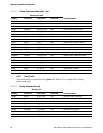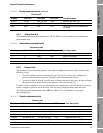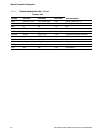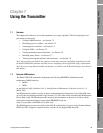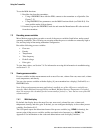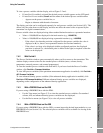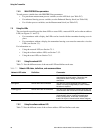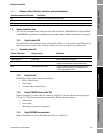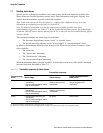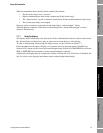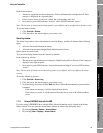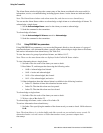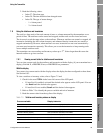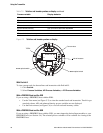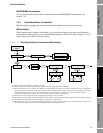
40 Micro Motion
®
Model 2400S Transmitters for PROFIBUS-DP
Using the Transmitter
7.7 Handling status alarms
Specific process or flowmeter conditions cause status alarms. Each status alarm has an alarm code.
Status alarms are classified into three severity levels: Fault, Information, and Ignore. Severity level
controls how the transmitter responds to the alarm condition.
Note: Some status alarms can be reclassified, i.e., configured for a different severity level. For
information on configuring severity level, see Section 8.8.
Note: For detailed information on a specific status alarm, including possible causes and
troubleshooting suggestions, see Table 11-2. Before troubleshooting status alarms, first acknowledge
all alarms. This will remove inactive alarms from the list so that you can focus troubleshooting efforts
on active alarms.
The transmitter maintains two status flags for each alarm:
• The first status flag indicates current “active” or “inactive” status.
• The second status flag indicates current “acknowledged” or “unacknowledged” status.
In addition, the transmitter maintains alarm history for the 50 most recent alarm occurrences. Alarm
history includes:
• The alarm code
• The “alarm active” timestamp
• The “alarm inactive” timestamp
• The “alarm acknowledged” timestamp
When the transmitter detects an alarm condition, it checks the severity level of the specific alarm and
performs the actions described in Table 7-4.
Table 7-4 Transmitter responses to status alarms
Alarm severity
level
(1)
(1) See Section 8.8 for information on setting the alarm severity level.
Transmitter response
Status flags Alarm history
Digital communications
fault action
Fault • “Alarm active” status flag set
immediately
• “Alarm unacknowledged” status
flag set immediately
“Alarm active” record
written to alarm history
immediately
Activated after configured fault
timeout has expired (if
applicable)
(2)
(2) See Sections 8.10.7 and 8.10.8 for more information on digital communications fault action and fault timeout.
Informational • “Alarm active” status flag set
immediately
• “Alarm unacknowledged” status
flag set immediately
“Alarm active” record
written to alarm history
immediately
Not activated
Ignore • “Alarm active” status flag set
immediately
• “Alarm unacknowledged” status
flag set immediately
No action Not activated



